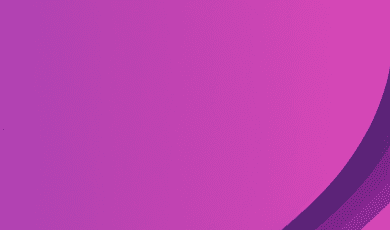
How the Internet Became Everyone’s Side Job
The internet has fundamentally transformed the way we live, work, and interact, reshaping economies and societies in ways that were unimaginable just a few decades ago. One of the most striking developments is how it has turned millions of people into part-time entrepreneurs, freelancers, and creators, effectively making the internet a side job for countless individuals. From selling handmade crafts to monetizing TikTok videos, the digital landscape has democratized income generation, enabling people from all walks of life to supplement their earnings or even replace traditional jobs. This article explores the factors behind this phenomenon, its implications, and the challenges it brings, while highlighting how the internet has become a universal side hustle.
The Rise of the Gig Economy
The gig economy, fueled by the internet, has been a major driver in turning side hustles into a mainstream phenomenon. Platforms like Uber, Airbnb, and Upwork have made it easier than ever for individuals to offer services or assets for profit. These platforms act as intermediaries, connecting people with skills or resources to those in need, often requiring little more than a smartphone and an internet connection. According to a 2024 report from the Bureau of Labor Statistics, nearly 40% of U.S. workers participated in some form of gig work, with a significant portion doing so through online platforms.
This shift has been enabled by the accessibility of digital tools. Anyone with a laptop or phone can set up an online store, offer freelance services, or create content for a global audience. The barriers to entry are low, and the potential reach is vast. For example, a teacher in a small town can tutor students across the globe via Zoom, while a stay-at-home parent can sell custom artwork on Etsy. The internet has removed geographical and logistical constraints, making it possible for anyone to tap into a worldwide market.
The Creator Economy and Content Monetization
Parallel to the gig economy, the creator economy has exploded, turning hobbies into income streams. Platforms like YouTube, TikTok, and Patreon have empowered individuals to monetize their creativity, whether through ad revenue, sponsorships, or fan subscriptions. A 2025 study by LinkFlow estimated that over 50 million people worldwide now identify as content creators, with many earning supplemental income from their online presence. This includes everyone from fitness influencers sharing workout routines to niche bloggers reviewing vintage cameras.
The appeal of the creator economy lies in its flexibility and scalability. A single viral video can generate thousands of dollars in ad revenue, while consistent content creation can build a loyal audience willing to pay for exclusive content. For many, this has turned passions into profitable side ventures. However, the creator economy is not without its challenges. The algorithms that govern platform visibility are unpredictable, and creators often face burnout from the pressure to produce content regularly.
Technology as an Enabler
The technological infrastructure of the internet has been pivotal in making side hustles accessible. High-speed internet, affordable cloud storage, and user-friendly software have lowered the cost of starting an online venture. Tools like Canva for graphic design, Shopify for e-commerce, and social media schedulers have simplified tasks that once required specialized skills. Additionally, payment platforms like PayPal and Stripe have made it seamless to receive payments from anywhere in the world.
Artificial intelligence has further accelerated this trend. AI tools can now assist with content creation, from generating blog post ideas to editing videos. For instance, a freelancer can use AI-powered writing assistants to draft marketing copy faster, allowing them to take on more clients. These advancements have made it easier for individuals to manage side hustles alongside full-time jobs or other responsibilities.
The Social and Cultural Shift
The internet’s role as a side job enabler reflects a broader cultural shift toward valuing flexibility and autonomy. Traditional 9-to-5 jobs, while still prevalent, are no longer the only path to financial stability. Many people, particularly younger generations, prioritize work that aligns with their passions or offers greater control over their time. The internet has made this possible by providing a platform to showcase skills, connect with audiences, and build personal brands.
This shift is also driven by economic necessity. Rising living costs and stagnant wages in many sectors have pushed people to seek additional income sources. For some, the internet provides a safety net, allowing them to earn extra money without committing to a second full-time job. For others, it’s a stepping stone to entrepreneurship, offering a low-risk way to test business ideas before diving in fully.
Challenges and Inequities
While the internet has opened up opportunities, it’s not a level playing field. Success in online side hustles often depends on factors like access to technology, digital literacy, and time availability. Those in lower-income brackets or with demanding jobs may struggle to compete in a crowded digital marketplace. Additionally, the gig economy can be precarious, with inconsistent income and a lack of benefits like health insurance or paid leave.
The digital divide remains a significant barrier. In rural areas or developing countries, unreliable internet access can limit participation in online work. Even in developed nations, marginalized communities may lack the resources or training needed to fully leverage online opportunities. Addressing these inequities will be crucial to ensuring that the internet’s potential as a side job platform is truly inclusive.
The Future of Internet Side Hustles
Looking ahead, the trend of internet-based side hustles is likely to grow. Emerging technologies like blockchain and the metaverse could create new avenues for income generation, from trading digital assets to offering virtual services. However, this evolution will also bring new challenges, such as increased competition and the need for continuous upskilling to stay relevant.
Governments and policymakers will need to adapt to this new reality. Labor laws, tax regulations, and social safety nets must evolve to account for the rise of gig and creator economies. For instance, some countries are exploring portable benefits systems that allow gig workers to access health insurance and retirement plans, regardless of their employment status.
A New Era of Work
The internet has redefined what it means to work, turning side hustles into a global phenomenon. It has empowered millions to pursue their passions, supplement their income, or even build entirely new careers. From freelancers to content creators, the digital age has made it possible for anyone with an idea and an internet connection to become an entrepreneur.
However, this transformation comes with trade-offs. The flexibility and opportunity of internet side hustles are tempered by challenges like instability, competition, and inequity. As the internet continues to evolve, so too will the ways in which we work and earn. The key to sustaining this new era of work lies in balancing innovation with fairness, ensuring that the internet remains a tool for empowerment rather than exclusion.
In conclusion, the internet has become everyone’s side job by breaking down barriers to entry, enabling creativity, and fostering a culture of entrepreneurialism. Whether it’s through gig platforms, content creation, or e-commerce, the digital world has given individuals unprecedented opportunities to shape their financial futures. Yet, as this trend grows, society must address the challenges it brings to ensure that the benefits are shared equitably. The internet’s role as a side hustle engine is a testament to its transformative power, but its true potential will depend on how we navigate the opportunities and pitfalls it presents.






